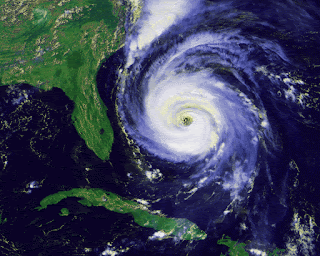RNS
A hurricane named "Fran" has been running through lots of the nation's states lately.
Hurricane Fran seems to have been originated from a tropical wave moving off the coast of Western Africa, into the Atlantic Ocean, on August 22th. Not long after, convective banding features seemingly formed around a developing low pressure area. Ships in the system's vicinity confirmed a surface circulation had formed later. The National Hurricane Center has designated it as Tropical Depression Six the next day. At that time, the depression was situated to the southeast of Cape Verde. Over the several following days, little development has been suspected to take place as the system moved westward at 17 mph.
By August 26, now Hurricane Fran becomes very chaotic,
prompting the NHC to issue initial final recommendations for the system.
The next day, satellite images described the improved circulation, which led to the reissue of the consultation.
However, analysis after the storm showed that the system maintained a tropical depression within 24 hours.
On the afternoon of August 27, the depression further intensified and became a tropical storm, under the name Fran. At this time, Tropical Storm Fran was about 1,000 miles (1,600 kilometers) east of Lesser Antilles. Following a trajectory similar to Edward’s, the newly named storm maintained a west-northwest trajectory while maintaining its strength.
After deep convective development around Fran's circulation center on August 29,
the NHC upgraded it to a Category 1 hurricane, the lowest on the Saffir-Simpson hurricane scale, with a wind speed of 75 mph (120 km/h).
However, as the hurricane became well-organized, it weakened into a tropical storm on August 30, possibly due to interaction with Hurricane Edward in the north. During this period, the forward movement of the storm significantly weakened and moved northwest. However, this weakening was short-lived, and Fran regained his hurricane status when Edward (Edouard) moved toward the mid-Atlantic coastline the next day.
As the subtropical ridge in the north strengthened, the storm resumed its northwest and northwest movement.
It gradually strengthened in the first few days of this month and Fran had wind speeds reaching 90 mph yesterday. Then the storm started to develop an eye and began a more rapid reinforcement phase. Today, Fran's maximum continuous air volume has increased to 115 mp, reaching Class 3 intensity.
Be safe, everyone.
This article uses material from the Wikipedia article "Hurricane Fran", which is released under the Creative Commons Attribution-Share-Alike License 3.0. The page has been modified from it's original form.
